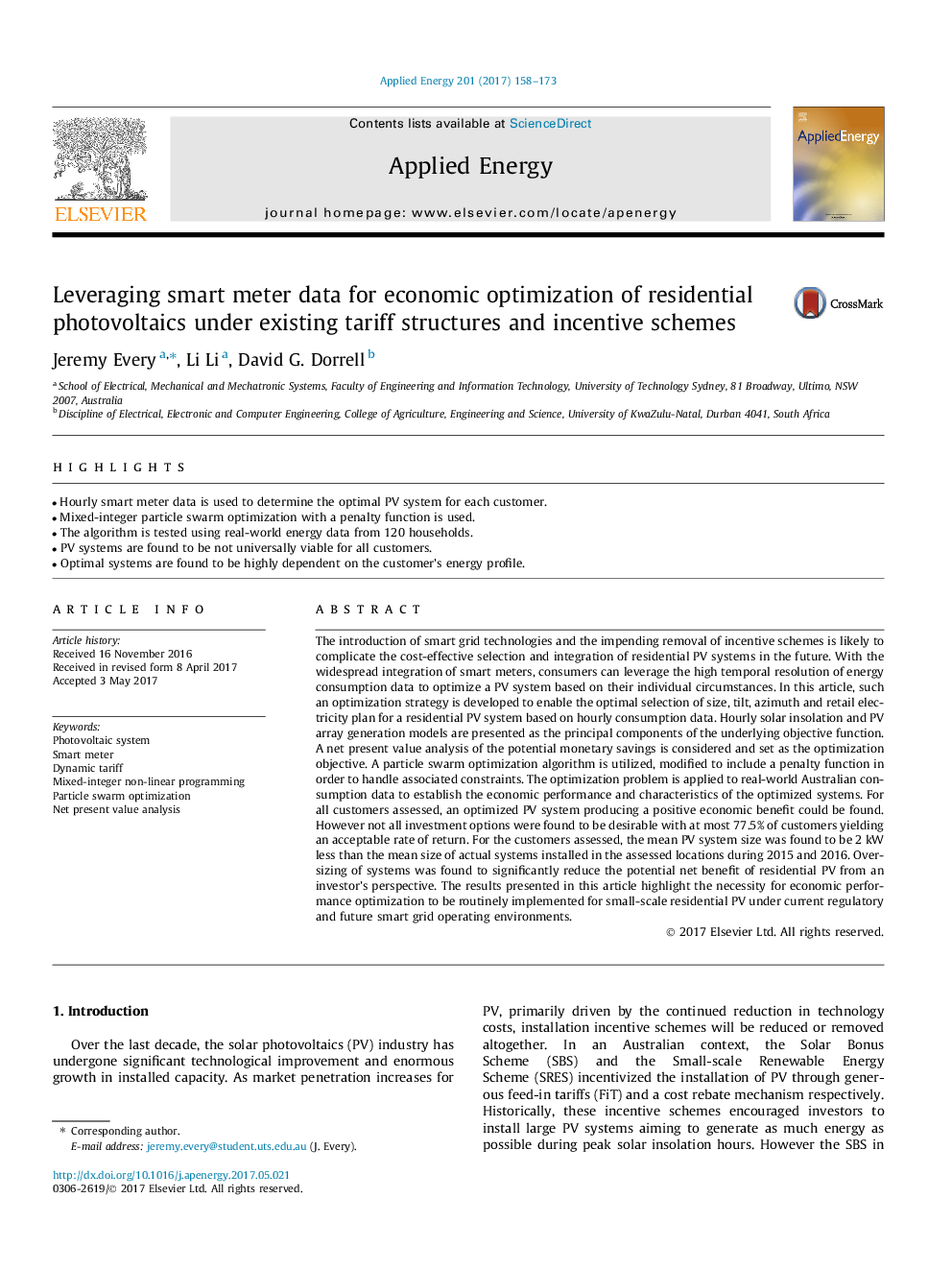| کد مقاله | کد نشریه | سال انتشار | مقاله انگلیسی | نسخه تمام متن |
|---|---|---|---|---|
| 4916010 | 1428089 | 2017 | 16 صفحه PDF | دانلود رایگان |
عنوان انگلیسی مقاله ISI
Leveraging smart meter data for economic optimization of residential photovoltaics under existing tariff structures and incentive schemes
ترجمه فارسی عنوان
استفاده از داده های هوشمند برای بهینه سازی اقتصادی فتوولتائیک های مسکونی تحت ساختار تعرفه ای موجود و طرح های انگیزشی
دانلود مقاله + سفارش ترجمه
دانلود مقاله ISI انگلیسی
رایگان برای ایرانیان
کلمات کلیدی
سیستم فتوولتائیک، متر هوشمند، تعرفه پویا، برنامه نویسی غیر خطی عدد صحیح مختلط، بهینه سازی ذرات ذرات، تجزیه و تحلیل ارزش خالص فعلی،
موضوعات مرتبط
مهندسی و علوم پایه
مهندسی انرژی
مهندسی انرژی و فناوری های برق
چکیده انگلیسی
The introduction of smart grid technologies and the impending removal of incentive schemes is likely to complicate the cost-effective selection and integration of residential PV systems in the future. With the widespread integration of smart meters, consumers can leverage the high temporal resolution of energy consumption data to optimize a PV system based on their individual circumstances. In this article, such an optimization strategy is developed to enable the optimal selection of size, tilt, azimuth and retail electricity plan for a residential PV system based on hourly consumption data. Hourly solar insolation and PV array generation models are presented as the principal components of the underlying objective function. A net present value analysis of the potential monetary savings is considered and set as the optimization objective. A particle swarm optimization algorithm is utilized, modified to include a penalty function in order to handle associated constraints. The optimization problem is applied to real-world Australian consumption data to establish the economic performance and characteristics of the optimized systems. For all customers assessed, an optimized PV system producing a positive economic benefit could be found. However not all investment options were found to be desirable with at most 77.5% of customers yielding an acceptable rate of return. For the customers assessed, the mean PV system size was found to be 2Â kW less than the mean size of actual systems installed in the assessed locations during 2015 and 2016. Over-sizing of systems was found to significantly reduce the potential net benefit of residential PV from an investor's perspective. The results presented in this article highlight the necessity for economic performance optimization to be routinely implemented for small-scale residential PV under current regulatory and future smart grid operating environments.
ناشر
Database: Elsevier - ScienceDirect (ساینس دایرکت)
Journal: Applied Energy - Volume 201, 1 September 2017, Pages 158-173
Journal: Applied Energy - Volume 201, 1 September 2017, Pages 158-173
نویسندگان
Jeremy Every, Li Li, David G. Dorrell,
